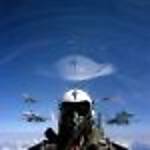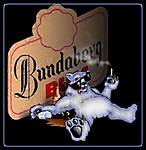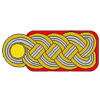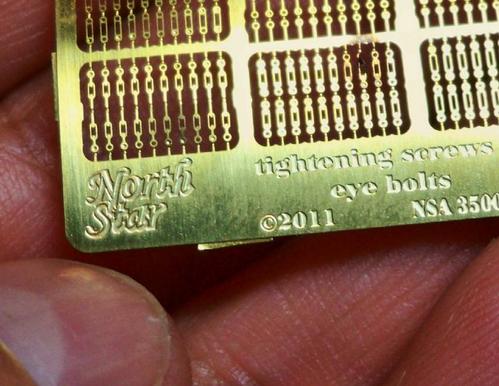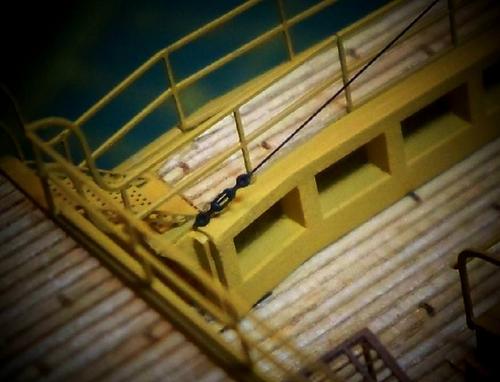
Despite its age and oddball scale of 1/232, there are actually three different photoetch part sets designed specifically for this model: Gold Medal Models set No. 240-4, Tom’s Modelworks set No. 240-01, and the brass photoetch sheets which come with the recent Squadron/Encore Models re-release. Any of these would make a huge improvement to the basic kit, but each has its weaknesses, too. Since I have all three sets on hand, I’ll be using parts from each for different areas of the build.
The most delicate and detailed of the offerings is the newest, the Squadron/Encore brass, which comes with their 2012 kit re-release. It is also the most comprehensive with many details not found in the others. This state of the art set is absolutely amazing, with incredible details like lightening holes on the steps of the stairs and chain railing with individual relief-etched links! Although it has its shortcomings, this set is definitely the finest overall.
Tom’s Modelworks Olympia detail parts are also very fine, although not quite as petite as the newer Squadron/Encore offering. Also, unlike the other sets, these parts are simple flat two-dimensional renderings without any relief etching. On the plus side, Tom’s has a few details absent from the Squadron/Encore and GMM sets such as support frames for the davit-mounted boats and some really cool wheel parts for the ship’s helm:

The Gold Medal Models set (which also contains parts to outfit Glencoe’s USS Oregon) is the least delicate and least comprehensive of the three. However, it has items not present in the others such as deck edge chocks, rigging blocks, eyebolts, and yardarm details. Also, it is the only one of the three which correctly provides railing to cover both the inner and outer sides of the superstructure edge catwalks. Tom’s Modelworks and Squadron/Encore evidently used the museum ship as reference, which today has only the outer rails in place, but photos show that the ship had both inner and outer rails when in service. In addition, the heftier GMM rails actually harmonize better with the heavy detail of the old Revell plastic kit parts and the pleasing but exaggerated plank effects on the Squadron/Encore wood deck.

After installing GMM rails on the superstructure side catwalks I outfitted the bridge deck with GMM railing cut into short, customized lengths to accommodate its complex contours. The ladders and rails on the wooden pilothouse were constructed from Squadron/Encore parts, as was the intricate elevated compass platform. The Tom’s set has a pretty good platform assembly also, but the Squadron/Encore version with its finely perforated deck is even better.

The Squadron/Encore set also supplied the excellent stair parts for the catwalks on the sides of the superstructure. Unfortunately, the stairways on either side of the funnel from the boat deck to the bridge deck were not provided. I used GMM parts for these instead. Even though they aren’t exactly the same as the catwalk steps, the greater length, steeper angle, and different style handrails on them help make the discrepancy less noticeable.









